Tentative first steps into the Mary Skelter series
For several years now, I’ve had all the Mary Skelter games on my shelf, and I’ve never gotten around to playing them. It’s a somewhat intimidating series to get started with, you see, with most people saying that each of the three games in the series has the potential to go on for a hundred hours or more.
On top of that, it’s one of those series that, in order to fully appreciate, it supposedly isn’t just as simple as playing the first one, the second one, then the third one. Not only is the recommended play order 2-1-3 — hence why the first Mary Skelter is included as an unlockable extra in Mary Skelter 2 — but there’s also a bunch of light novels and short stories that fit into the experience somewhere, too. We’re not quite at Nier levels of cross-media appreciation, but it’s definitely a series that goes the extra mile in terms of narrative context.
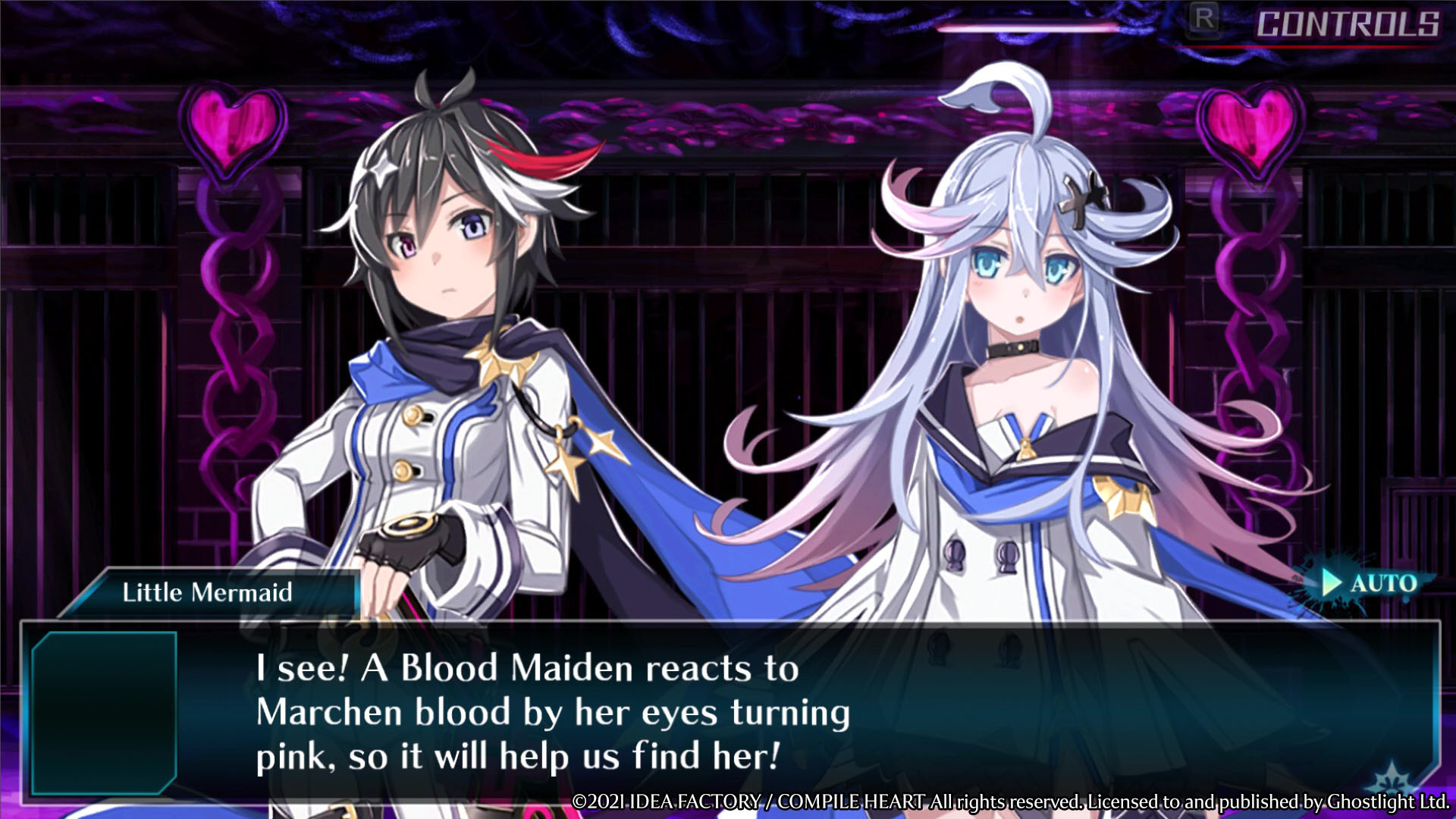
The other night, I felt like I was in the mood for a dungeon crawler, and so I thought it was probably time I actually got stuck into this series. If I kept putting it off on the grounds that each game is super-long, my thought process went, then I’m never going to get through it. And everyone who’s played it says it’s really good. And I wanted to know why. So, without a care for the consequences, I slapped my Mary Skelter 2 cartridge into my Switch and started playing. And, after about 6 hours of gameplay so far, I already get it. This is a magnificent series.
The concept of Mary Skelter 2 — I can’t speak for the others as yet, as I haven’t yet played them and thus don’t yet know their connections — is that a Japanese city (implied to be Tokyo, but the game says that everyone has forgotten its name) fell down a big hole and into what appears to be Hell. Out of the ashes rose a gigantic prison tower, and all around the tower are various ruined districts, where the surviving humans end up imprisoned and tortured by the Nightmares and their Marchen minions.
Standing up against the threat are the Blood Maidens, introduced to us with the characters Otsuu, Little Mermaid and Red Riding Hood. Mary Skelter 2 starts in medias res with these three on a mission to search for additional Blood Maidens to join their ranks, though if you take the time to read the companion book of short stories (available either as a PDF on Idea Factory’s website or in hardcopy form as part of the Mary Skelter Finale limited edition) things make a lot more sense.
The Blood Maidens are young women who, for one reason or another, react strongly to Marchen blood. Specifically, being splashed with it causes their eyes to turn a vibrant shade of pink, which indicates that they are able to use a variety of special powers.
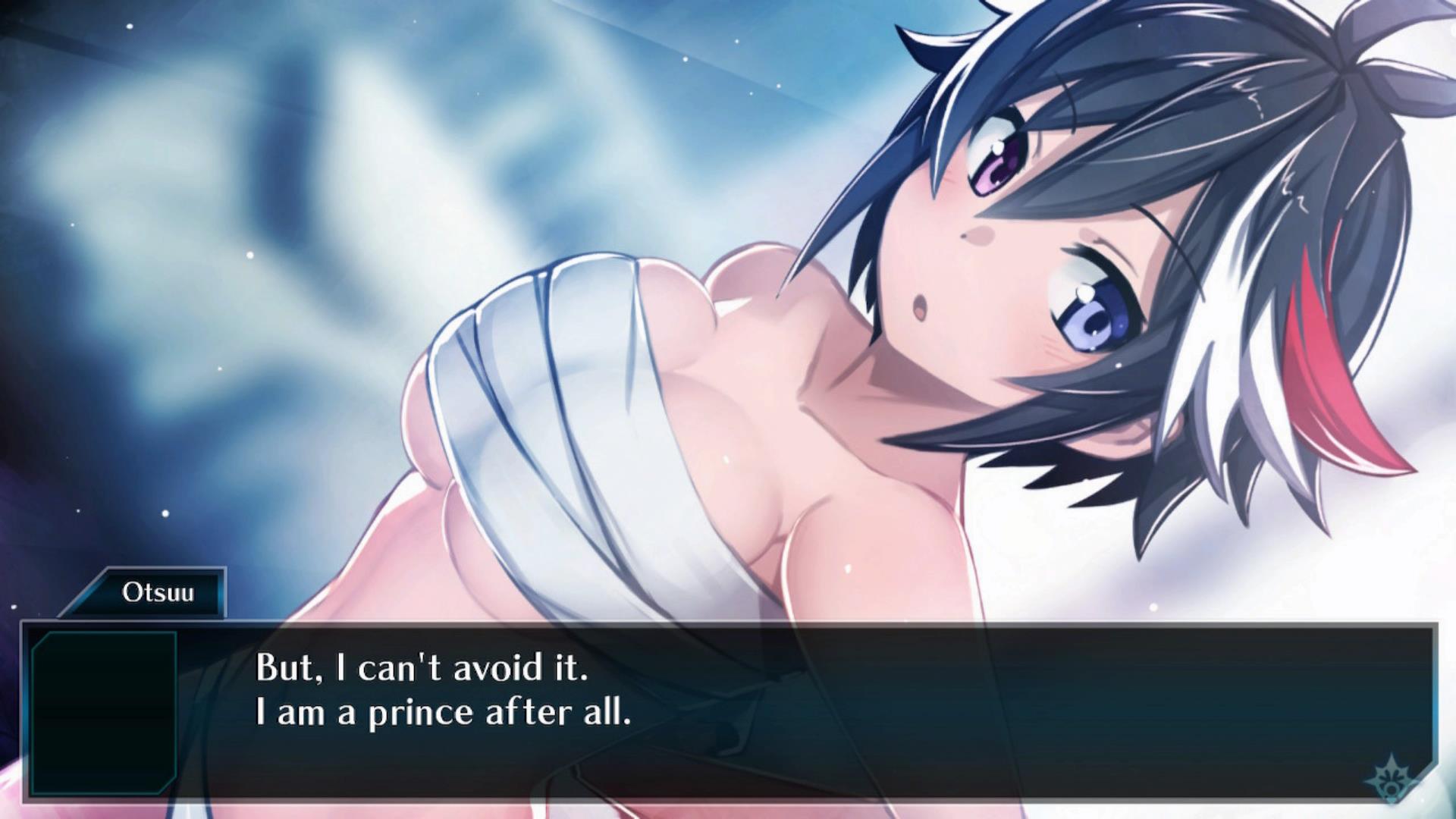
The background of most of the Blood Maidens is shrouded in mystery, and they are all named after traditional stories and fairy tales; while it’s not suggested that they are the characters from those traditional stories, there are certainly elements of their respective pasts that resemble their namesakes; for example, Little Mermaid and Otsuu are immediately smitten with one another, but Little Mermaid desires Otsuu to be her “prince”, leading to the latter binding her chest and attempting to act as “masculine” as possible.
I won’t say too much about the story for now, firstly because I haven’t played far enough to comment in further detail, and secondly because it’s already clear that part of the joy of the Mary Skelter series is uncovering its extensive lore for yourself. But what I can talk about is the gameplay in the early hours.
Initially, Mary Skelter 2 seems quite easy by dungeon crawler standards. The dungeon you’re tasked with negotiating is pretty straightforward to get through — though there are a few seemingly impassable traps — and combat encounters present little to no threat whatsoever. The game’s interface implies that there’s a lot more in the way of mechanics available, though most of these are locked off and left unexplained initially.
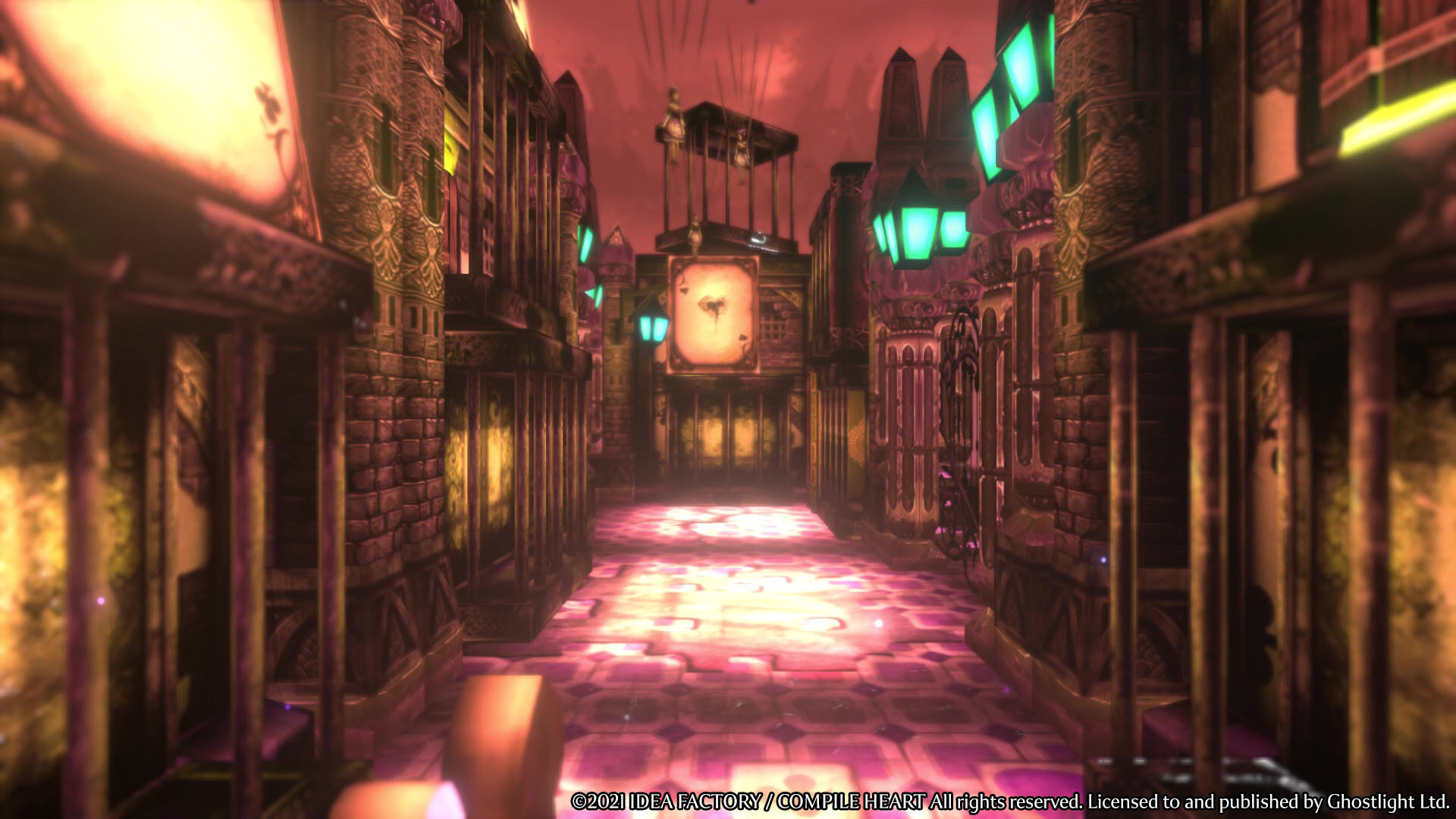
Dungeon crawler veterans may find themselves feeling a little disappointed by this, as this is an RPG subgenre notorious for kicking players’ asses in their opening hours — but really, this is a sensible decision, as it makes the experience as a whole a lot more accessible to newcomers. By making what is effectively the game’s “intro” as simple as a non-dungeon crawler RPG, and then drawing people in with an intriguing narrative, it’s likely to find a much wider audience — who may well then find themselves enamoured with this distinctive subgenre.
The whole introduction takes maybe an hour to an hour and a half or so, with a fair amount of dialogue along the way — itself quite unusual for more traditional takes on the subgenre. But after a dramatic scene that indicates that Shit Has Indeed Got Real, veterans will start finding themselves in more familiar territory. The dungeon designs become more complex, the combat encounters become more challenging — and gradually, little by little, new mechanics and structural elements start to be introduced.
The first of these come when you establish a base of operations in conjunction with some secondary characters. Not only does this unlock RPG staples like an item shop, but it also allows you to start upgrading and customising your equipment using the Blood Crystals dropped by enemies, and even to indulge in a touch of interior design by buying customisation items for the various Blood Maidens’ rooms. We’re also introduced to some relationship mechanics, whereby you can buy gifts for the Blood Maidens in order to make them like you more, and in turn unlock special scenes with them.
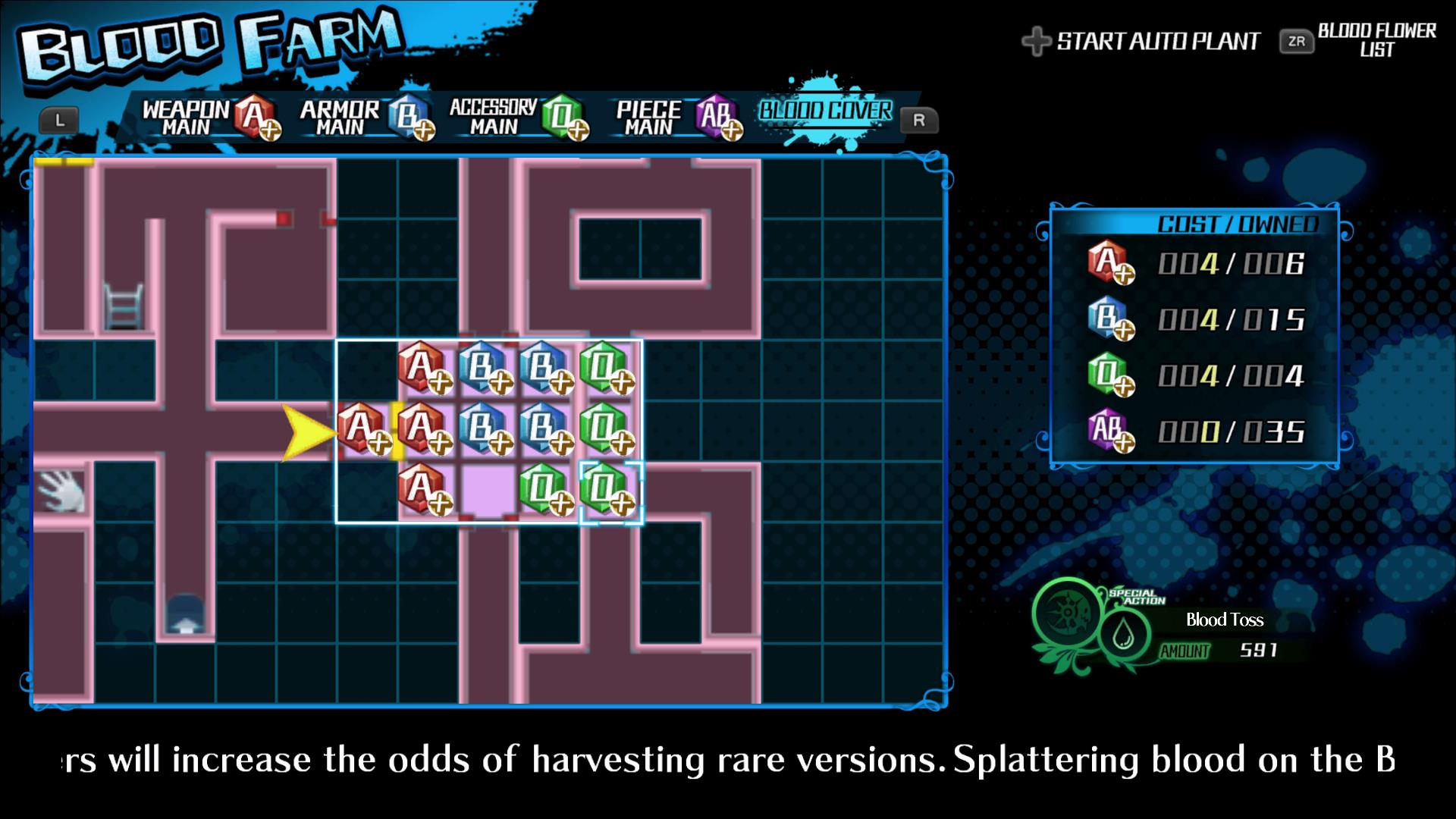
After a bit more exposition, you find yourself in what can probably be described as the game’s first “proper” dungeon. You have a long-term objective to accomplish now — and the game makes a notable upswing in difficulty at this point, also. Now you’re at the traditional dungeon crawler point where even regular enemies will kick the shit out of you if you’re not prepared — but you’re also introduced to yet more mechanics that will help even the odds somewhat.
Of particular note is the “Blood Farm” feature, whereby you can plant the aforementioned Blood Crystals in the dungeon and, after a few battles, harvest them for various useful items — including equipment that is a lot better than that which you’ll just find lying around on the floor. The nice thing about this system is that it makes the process of “grinding” feel worthwhile; now, instead of just doing so to get more experience and money, you’re actually working your way towards another festival of shiny loot to harvest.
While the loot produced through Blood Farm is randomly generated, you’ll find that it provides much greater opportunity to customise and specialise the Blood Maidens you have available to you at that point in the story. Making some wise equipment decisions will make those initially very difficult-seeming combat encounters much more manageable — and in turn, you can progress further into the dungeon.
A side-effect of the way this is implemented is that it cuts down on the need to constantly run back and forth between the dungeon and the base, as seen in other dungeon crawlers. Because you have a means of creating items within the dungeon itself, you can use Blood Farm to be a lot more self-sufficient in the early game than you can be in other examples of the dungeon crawler subgenre. That said, it still pays to pop back home occasionally to identify items such as Blood Packs (which upgrade character abilities and allow them to use new skills) and stock up on provisions.
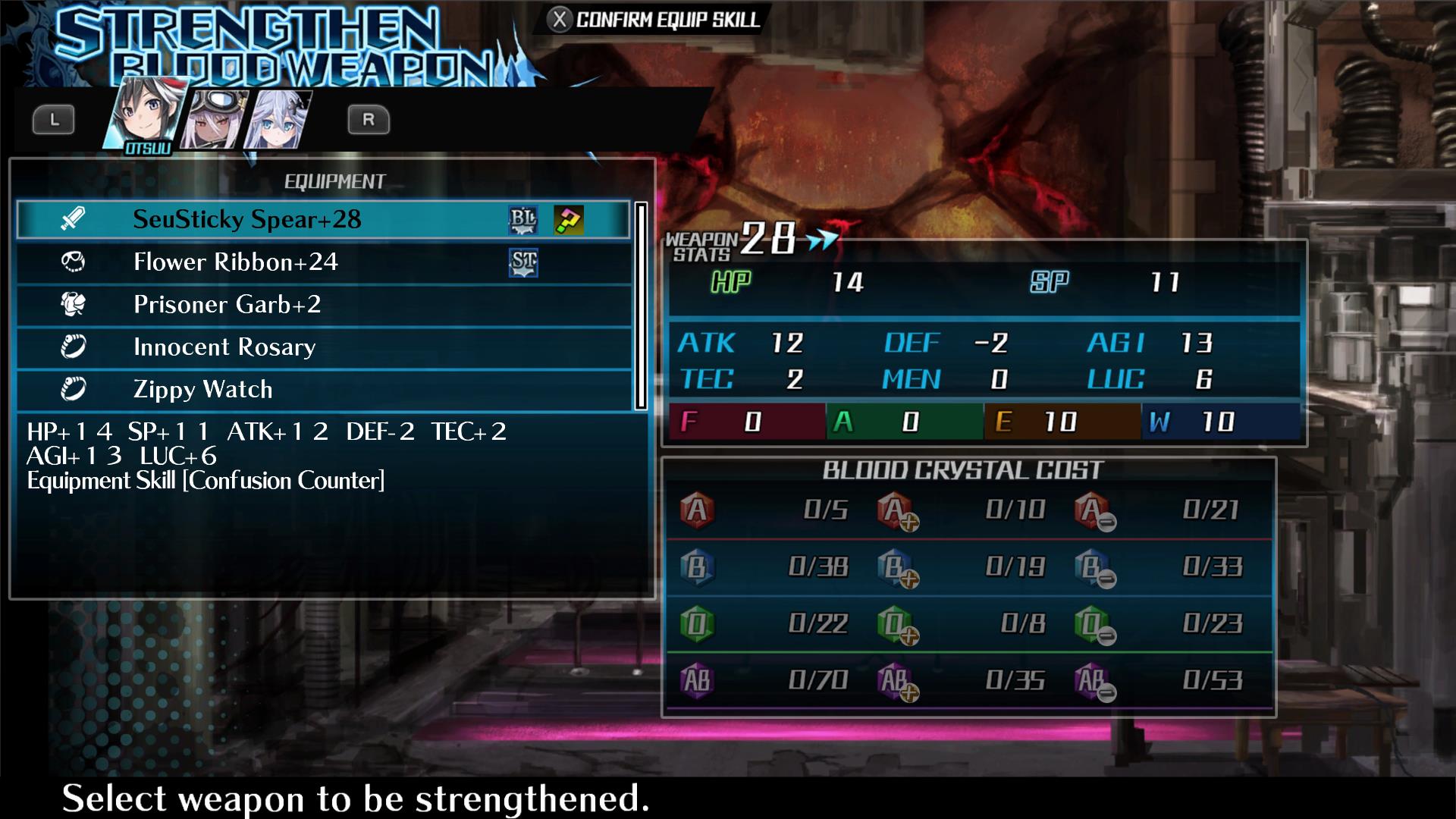
Yes, provisions; while Mary Skelter 2 doesn’t make use of a “hunger” system as seen in early takes on the dungeon crawler genre, there’s quite a strong focus on ensuring you have plenty of food and water in your pack, because food restores HP and drinks restore SP. By doling out the rations after particularly troublesome battles, you’ll find that you can keep expeditions going for longer without feeling the need to run for home every time you exhaust your characters.
It’s hopefully clear from all this that Mary Skelter 2 is doing much more than a simple, straightforward dungeon crawler. And this isn’t even getting into some of its more esoteric mechanics, such as managing the mental state of your party members, satisfying the needs and calming the mood of the dungeon itself, and, of course, running like the clappers any time one of the invincible Nightmares show up.
It’s clear to me that, just six hours in, I’ve barely scratched the surface of what Mary Skelter 2 has to offer, but it’s already abundantly obvious why this is such a well-regarded series — and that rare example of a Compile Heart game that even the company’s most ardent haters have to admit is actually very good indeed. I’m looking forward to diving further in — and if you’re yet to take the plunge yourself, I highly recommend casting aside any feelings of intimidation you might feel and just getting started!
Join The Discussion
Rice Digital Discord
Rice Digital Twitter
Rice Digital Facebook
Or write us a letter for the Rice Digital Friday Letters Page by clicking here!
Disclosure: Some links in this article may be affiliate links, which means we may earn a small commission if you make a purchase after clicking on them. This is at no additional cost to you and helps support Rice Digital!
- Letter from the Editor: passing the torch - June 30, 2023
- Super Woden GP 2 is looking promising - June 30, 2023
- Inti Creates is making a 32 bit-style Love Live action platformer - June 26, 2023






